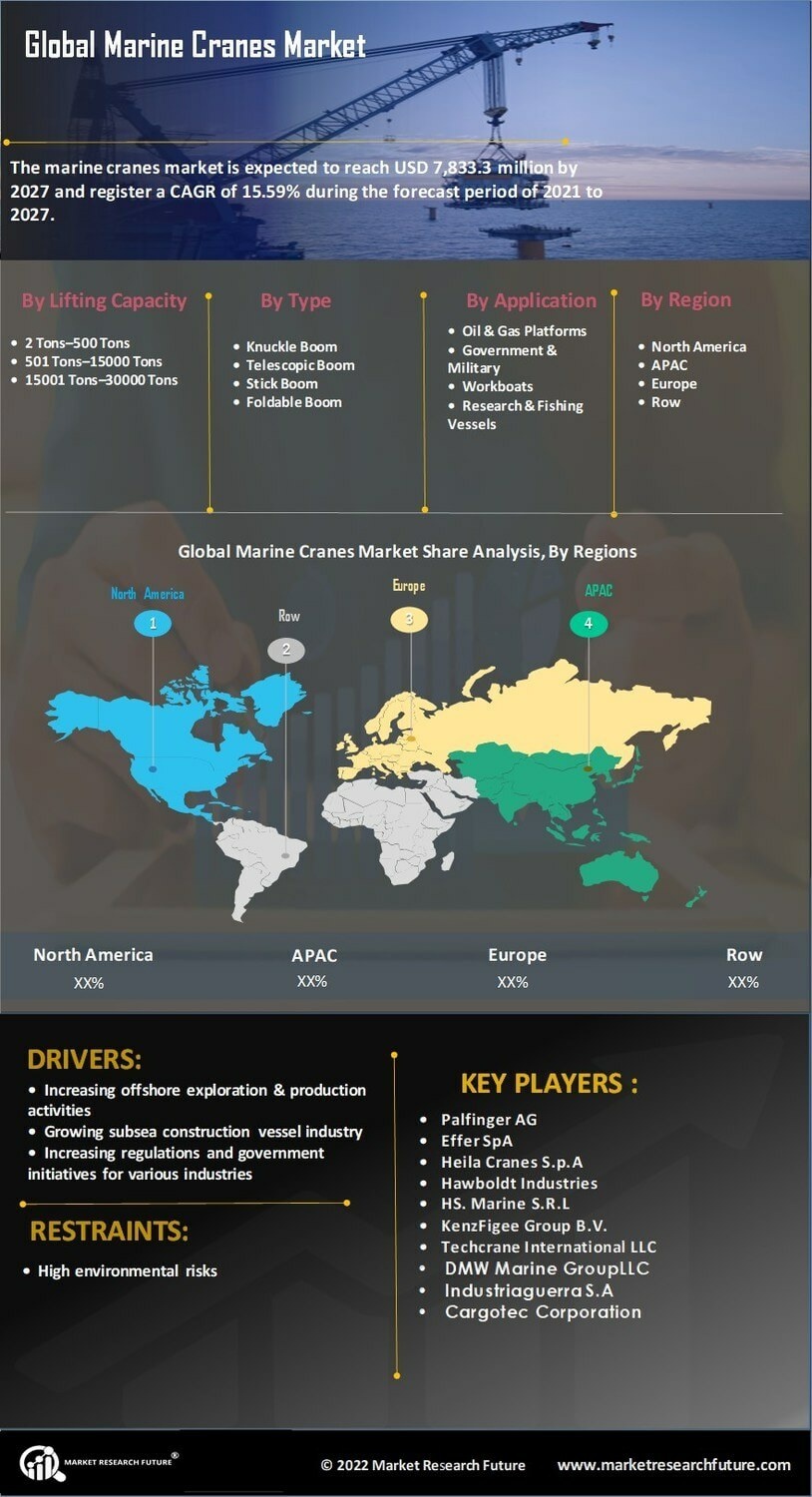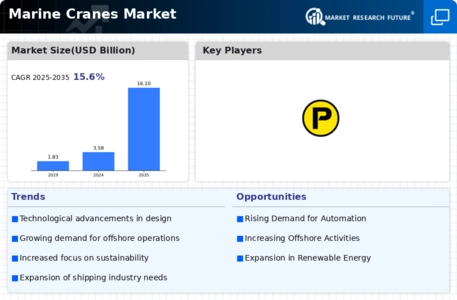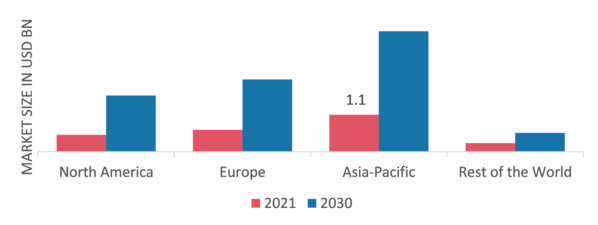Market Growth Projections
The Global Marine Cranes Market Industry is projected to experience substantial growth in the coming years. The market value is expected to reach 3.58 USD Billion in 2024, with a remarkable increase to 16.1 USD Billion by 2035. This growth trajectory indicates a compound annual growth rate (CAGR) of 14.66% from 2025 to 2035. Such projections highlight the increasing reliance on marine cranes across various sectors, including offshore oil and gas, shipping, and renewable energy. The anticipated growth reflects the industry's adaptability to evolving market demands and technological advancements.
Growing Demand for Offshore Activities
The Global Marine Cranes Market Industry is experiencing a surge in demand driven by the increasing activities in offshore oil and gas exploration. As countries seek to enhance their energy security, investments in offshore drilling and production are likely to rise. This trend is reflected in the projected market value, which is expected to reach 3.58 USD Billion in 2024 and grow significantly to 16.1 USD Billion by 2035. The compound annual growth rate (CAGR) of 14.66% from 2025 to 2035 indicates a robust expansion, suggesting that marine cranes will play a pivotal role in supporting these offshore operations.
Technological Advancements in Crane Design
Innovations in crane technology are transforming the Global Marine Cranes Market Industry, enhancing efficiency and safety. Advanced materials and automation are being integrated into crane designs, allowing for higher lifting capacities and improved operational precision. For instance, the adoption of smart sensors and IoT technology enables real-time monitoring and predictive maintenance, reducing downtime. These advancements not only increase productivity but also align with the industry's push for sustainability, as more efficient cranes can lead to lower fuel consumption and emissions. As a result, the market is likely to see a shift towards these technologically advanced solutions.
Regulatory Support for Maritime Infrastructure
The Global Marine Cranes Market Industry is benefiting from favorable regulatory frameworks aimed at enhancing maritime infrastructure. Governments worldwide are investing in port expansions and upgrades to accommodate larger vessels and increased cargo traffic. This investment is likely to drive demand for marine cranes, as they are essential for loading and unloading operations. Policies promoting sustainable practices in maritime operations further encourage the adoption of modern cranes that meet environmental standards. Consequently, the market is poised for growth as these regulatory initiatives create a conducive environment for infrastructure development.
Rising Importance of Renewable Energy Projects
The Global Marine Cranes Market Industry is witnessing a notable shift towards renewable energy projects, particularly offshore wind farms. As nations commit to reducing carbon emissions, the demand for marine cranes to support the construction and maintenance of these facilities is expected to rise. The installation of wind turbines requires specialized cranes capable of handling heavy components in challenging marine environments. This trend not only diversifies the applications of marine cranes but also aligns with global sustainability goals. The increasing investment in renewable energy infrastructure is likely to contribute positively to the market's growth trajectory.
Expansion of Global Trade and Shipping Activities
The Global Marine Cranes Market Industry is closely tied to the expansion of global trade and shipping activities. As international trade continues to grow, the demand for efficient cargo handling solutions at ports is becoming increasingly critical. Marine cranes are essential for loading and unloading containers, and their efficiency directly impacts port operations. The growth in container shipping, driven by e-commerce and globalization, is likely to propel the demand for advanced marine cranes. This trend suggests that the market will continue to expand, driven by the need for improved logistics and supply chain efficiency.












